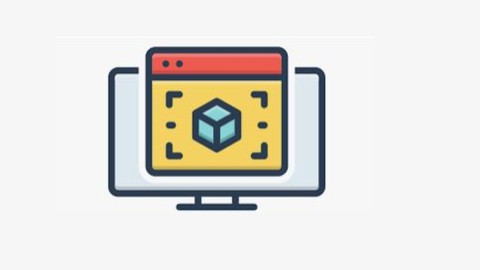
Installing Python and creating Virtual Environments
Installing Python and creating Virtual Environments, available at $39.99, has an average rating of 4.6, with 11 lectures, based on 10 reviews, and has 1525 subscribers.
You will learn about Install Python on Windows Install Python on Macs Install Python on Linux Create virtual environments on Windows with Python Create virtual environments on Macs with Python Create virtual environments on Linux with Python Activate virtual environments on Windows Activate virtual environments on Macs Activate virtual environments on Linux This course is ideal for individuals who are Beginners to Python It is particularly useful for Beginners to Python.
Enroll now: Installing Python and creating Virtual Environments
Summary
Title: Installing Python and creating Virtual Environments
Price: $39.99
Average Rating: 4.6
Number of Lectures: 11
Number of Published Lectures: 11
Number of Curriculum Items: 11
Number of Published Curriculum Objects: 11
Original Price: $19.99
Quality Status: approved
Status: Live
What You Will Learn
- Install Python on Windows
- Install Python on Macs
- Install Python on Linux
- Create virtual environments on Windows with Python
- Create virtual environments on Macs with Python
- Create virtual environments on Linux with Python
- Activate virtual environments on Windows
- Activate virtual environments on Macs
- Activate virtual environments on Linux
Who Should Attend
- Beginners to Python
Target Audiences
- Beginners to Python
Python is a computer programming language often used to build websites and software, automate tasks, and conduct data analysis. Python is a general-purpose language, meaning it can be used to create a variety of different programs and isn’t specialized for any specific problems. This versatility, along with its beginner-friendliness, has made it one of the most-used programming languages today.
Python has become one of the most popular programming languages in the world in recent years. It’s used in everything from machine learning to building websites and software testing. It can be used by developers and non-developers alike.
Python, one of the most popular programming languages in the world, has created everything from Netflix’s recommendation algorithm to the software that controls self-driving cars. Python is a general-purpose language, which means it’s designed to be used in a range of applications, including data science, software and web development, automation, and generally getting stuff done.
A virtual environment is simply a tool that separates the dependencies of different projects by creating a separate isolated environment for each project.
Python has various modules and packages for different applications. During our project, it may require a third-party library, which we install. Another project also uses the same directory for retrieval and storage but doesn’t require any other third-party packages.
So, the virtual environment can come into play and make a separate isolated environment for both projects, and each project can store and retrieve packages from their specific environment.
Course Curriculum
Chapter 1: Python Installation on Windows,Macs,Liniux
Lecture 1: Introduction
Lecture 2: What is Python
Lecture 3: Installing Python on Windows
Lecture 4: Installing Python 3 on Macs
Lecture 5: Installing Python 3 on Linux
Chapter 2: Create Virtual Environments with Python
Lecture 1: Create virtual environments on Windows
Lecture 2: Activate virtual environments on Windows
Lecture 3: Create virtual environments on Macs
Lecture 4: Activate virtual environments on Macs
Lecture 5: Create virtual environments on Linux
Lecture 6: Activate virtual environments on Linux
Instructors
-
Bluelime Learning Solutions
Making Learning Simple
Rating Distribution
- 1 stars: 0 votes
- 2 stars: 0 votes
- 3 stars: 1 votes
- 4 stars: 3 votes
- 5 stars: 6 votes
Frequently Asked Questions
How long do I have access to the course materials?
You can view and review the lecture materials indefinitely, like an on-demand channel.
Can I take my courses with me wherever I go?
Definitely! If you have an internet connection, courses on Udemy are available on any device at any time. If you don’t have an internet connection, some instructors also let their students download course lectures. That’s up to the instructor though, so make sure you get on their good side!
You may also like
- Top 10 Language Learning Courses to Learn in November 2024
- Top 10 Video Editing Courses to Learn in November 2024
- Top 10 Music Production Courses to Learn in November 2024
- Top 10 Animation Courses to Learn in November 2024
- Top 10 Digital Illustration Courses to Learn in November 2024
- Top 10 Renewable Energy Courses to Learn in November 2024
- Top 10 Sustainable Living Courses to Learn in November 2024
- Top 10 Ethical AI Courses to Learn in November 2024
- Top 10 Cybersecurity Fundamentals Courses to Learn in November 2024
- Top 10 Smart Home Technology Courses to Learn in November 2024
- Top 10 Holistic Health Courses to Learn in November 2024
- Top 10 Nutrition And Diet Planning Courses to Learn in November 2024
- Top 10 Yoga Instruction Courses to Learn in November 2024
- Top 10 Stress Management Courses to Learn in November 2024
- Top 10 Mindfulness Meditation Courses to Learn in November 2024
- Top 10 Life Coaching Courses to Learn in November 2024
- Top 10 Career Development Courses to Learn in November 2024
- Top 10 Relationship Building Courses to Learn in November 2024
- Top 10 Parenting Skills Courses to Learn in November 2024
- Top 10 Home Improvement Courses to Learn in November 2024






















